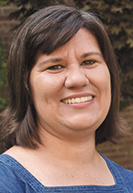Subscriber Benefit
As a subscriber you can listen to articles at work, in the car, or while you work out. Subscribe NowThe age of the average American is trending upward.
By the year 2030, all Americans born during the baby boomer generation (1946-1964) will have reached 65 years of age or older — around 73 million individuals nationwide.
Data from the 2020 census revealed around 16% of Indiana’s population is currently 65 years or older. According to a 2018 study by the Indiana Business Research Center, Indiana University Kelley School of Business, one in five Hoosiers will be senior citizens by 2030. The recent census also showed 9.7% of Hoosiers under the age of 65 have a disability, while 10.3% of Hoosiers above 65 are disabled.
As the age of the average Hoosier grows, so has the need for legal representation for vulnerable seniors and endangered adults in Indiana, according to experts.
In June 2018, the Indiana Family and Social Services Administration – Division of Aging released a state plan on aging for federal fiscal years 2019-2022. The study stated that based on reported statistics, 11% of those 60 years old and over suffer from some form of abuse each year, which would mean that “in 2030 potentially 157,287 Hoosiers 65 and older could suffer from abuse in a period of one year.”
Offering free legal help
To provide more legal resources to those in need, Indiana Legal Services launched the Legal Assistance for Victimized Adults, or LAVA, Project in 2017. The project was funded by a two-year grant from the Indiana Criminal Justice Institute, which has since been renewed twice.
The LAVA Project serves individuals 60 years and older and endangered adults (18 and older with disabilities) who are victims of a crime, including abuse and financial exploitation. They provide free legal help, which includes writing advice letters, assisting with negotiations and litigating cases in court.
Also, since the addition of a social worker to the program, the project now helps connect Hoosiers with nonlegal resources such as housing/rentals, food assistance, mental health and public benefits assistance.

LAVA Project Director Jessica Brock said since the program started, it has helped more than 700 individuals statewide. The staff, which started with two attorneys and a paralegal, has now grown to five attorneys, a paralegal and social worker, Brock said.
Most of the cases brought to the LAVA Project are breaches of fiduciary duty, Brock said, but they’ve also dealt with cases where clients were being physically and verbally abused, had issues with conversion of property and/or were victims of consumer fraud and scams.
Case types include:
- Power of attorney abuse — revocations, accountings.
- Domestic violence — protection orders, divorce.
- Unwanted abusive housemates — eviction, trespassing.
- Theft/conversion of property.
- Consumer fraud and scams.
- Guardianship termination and accountings.
Brock said the organization often works with community partners in assisting clients, primarily Adult Protective Services. She said the LAVA Project also works with financial institutions, agencies involved with aging around the state and private attorneys, among others.
The LAVA Project is one of the first of its kind in the country. Over the years, Brock said the organization has presented at national conferences, such as the American Elder Abuse and National Aging and Law conferences, to help other organizations.
The current grant funding ends in September 2022, and LAVA will apply again in the spring.
“Our grant doesn’t have any income or asset limitation on the clients we can help,” Brock said. “Unlike the rest of folks who might qualify for legal aid with income and asset caps, we are not subject to those with our grants.”
Brock has been with the project since the start and has seen the impact it has made on the clients it has served.
“We offer legal representation to victims of crimes for Hoosiers who are over 60 and Hoosiers who are endangered adults. Those populations are very underrepresented in Indiana and in the nation generally,” Brock said. “The cases they present are often complicated from a factual standpoint, and sometimes the client management can be time consuming. For a number of reasons, it can be very difficult for these individuals to find private legal counsel.
“For many, our services are the only civil legal services they have available to them,” she continued. “We have filled an obvious need in the community and that’s been demonstrated by our success.”
Assisting disabled Hoosiers

Melissa Keyes, executive director of Indiana Disability Rights, said she has also seen an increased need for legal representation for Hoosiers who have disabilities who are being abused and neglected.
IDR, the service arm of the Indiana Protection & Advocacy Services Commission, aims to protect and promote the rights of individuals with disabilities through empowerment and advocacy.
IDR has an abuse and neglect team that conducts investigations into allegations of abuse, neglect and exploitation and monitors facilities like group homes, workshops, nursing homes, psychiatric residential treatment facilities and mental health facilities for signs of abuse, neglect and exploitation.
Keyes estimated IDR works 10-15 cases per quarter on average. She said while IDR can’t fine a provider, they are able to do systematic investigations thanks to the broad authority they’re given, and can provide their findings to agencies overseeing the facilities.
IDR can also provide legal assistance to disabled Hoosiers, but it often won’t go that far to avoid any conflicts of interest tied to their investigations. Instead, they will often refer them to their local private bar.
“I think it’s a bigger problem than people realize. I think one of the most frustrating things about what we see is how little value there is from a legal sense to a person’s life with a disability — especially if they live in a facility,” Keyes said. “One of the things we often hear from the private bar when we do try to make those referrals is there’s not a whole lot of value. For example, there is often not things like recovery of lost wages and loss of consortium or things like that. It’s not always easy to find a private bar willing to do this.”
Keyes said IDR will only represent people with disabilities, but if the person has a guardian and wants their guardian to be involved, they will work with the guardian — but will take direction from the client directly to the extent that is possible. In cases where the guardian is the adverse party, it’s a bit more complicated, Keyes said, and it can depend on which program they’re operating under and the type of guardian (family vs. professional or organization) because there are slightly different rules.
According to the federal Office for Victims of Crime, individuals with a disability are more than twice as likely to be a victim of violent crime as those without a disability. Between 2017 and 2019, individuals with disabilities accounted for 26% of nonfatal violent crime in the U.S. despite representing just 12% of the population.
Keyes said more abusers need to be held accountable in court for their actions.
“The other frustrating thing we see is how few times legitimate, substantified incidents of abuse, neglect and exploitation, how often those occur without prosecution or without holding the staff member accused of that accountable,” she said. “They often get fired or resign, and because we don’t have any good method of tracking those folks in the state system, they turn around and go to another provider down the street. It’s a really big problem when it comes to making sure there is accountability for injustices that happen to folks with disabilities — especially those in facilities.”•
Please enable JavaScript to view this content.
